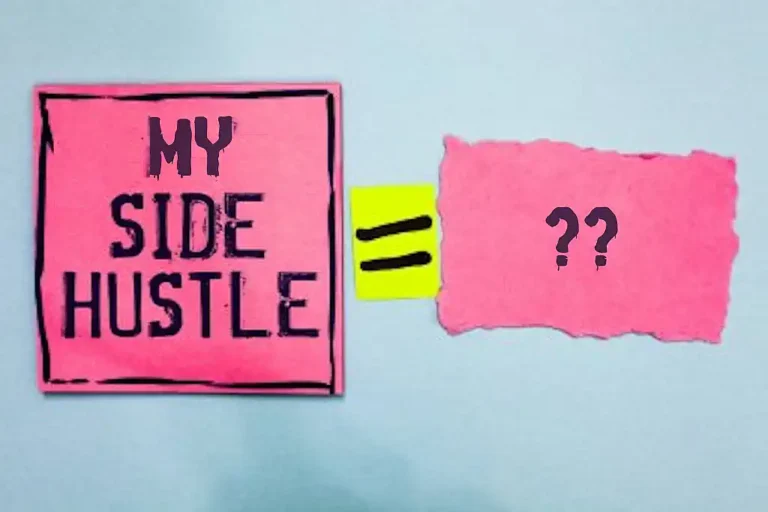The Unvarnished Truth About Starting Small
Here’s what nobody tells you about starting a side business: it doesn’t have to be perfect. While your sister-in-law who started a lifestyle blog might insist you need professional headshots and an LLC on day one, the truth is messier and more forgiving. I learned this the hard way, obsessing over business card fonts while my actual business gathered dust. So let me save you from that particular form of self-sabotage.
Legal Stuff Without the Stress
Start with a sole proprietorship. It’s unsexy, but it works. You’re essentially saying “I’m Jane Smith, and I make money doing things.” The government is fine with this. Later, when you’re rolling in client fees or worried about someone suing you over an Instagram caption, you can upgrade to an LLC.
The Money Part (Yes, You Need a Separate Account)
The bank account thing, though? Non-negotiable. Open a separate checking account that’s just for business. Trust me, you don’t want to explain to your accountant why that Target run was half paper clips and half scented candles. Your future self will thank you when tax season rolls around and you’re not sorting through twelve months of mixed receipts like some sort of financial archaeologist.
Getting Paid Without the Panic
Speaking of money, let’s talk about getting paid. PayPal or Stripe will do. They’re not perfect – they’ll take their cut, and sometimes they’ll hold your money like an overprotective parent – but they make you look professional. Which, let’s be honest, is half the battle when you’re starting out.
Looking Professional (Without the Photoshoot)
Create a business email address. Nothing screams “I’m not sure about this whole business thing” like sending invoices from sparkleprincess94@hotmail.com. Gmail is fine. Your business name at gmail.com. Done.
Contracts That Won’t Make You Cry
Contracts are another one of those things that feel intimidatingly adult, like having a favorite wine or understanding health insurance. But they don’t have to be complicated. Write down what you’ll do, when you’ll do it, and how much they’ll pay you. Add spaces for signatures. Congratulations, you have a contract.
Record-Keeping for the Reluctant
Keep records like your mother would want you to. Save receipts. Track your income. If you drive anywhere for business, log those miles like you’re planning a Mars mission. Your tax return will require this level of detail, and you don’t want to be making it up in April while stress-eating leftover Valentine’s candy.
When It’s Time to Get Fancy
Here’s when you know it’s time to get fancy: You’re making real money (let’s say over $1,000 a month), working with clients who have legal departments, or lying awake at night worried about liability. That’s when you level up – get the LLC, buy insurance, hire an accountant who doesn’t also prepare taxes at the mall.
But for now? Start simple. Start today. The most successful business owners I know didn’t wait for everything to be perfect. They just started, figured things out along the way, and kept the receipts.
Remember: your side hustle doesn’t need to look like a Fortune 500 company. It just needs to look legitimate enough that people feel comfortable paying you money. The rest is just details you can figure out over time, preferably while making actual money.

For those who prefer a more structured approach, here’s a straightforward checklist of everything you need to get started legally and professionally:
Basic Structure
Starting as a sole proprietor is the simplest way to begin your business legally. Here’s what you need to know:
- Start as a sole proprietor
- Simplest business structure
- Minimal paperwork
- You and the business are the same legal entity
- Personally responsible for debts/liabilities
Your business name is crucial – it’s your first step toward building a brand. Make sure it’s available:
- Choose business name
- Search state business registry
- Check Google for availability
- File DBA if using a name different from your legal name
As your business grows, you’ll want to consider additional protection. Here’s when and why:
- Plan for LLC upgrade
- Consider when earning $1,000+ monthly
- Consider when liability risks increase
- Costs $50-500 depending on state
- Provides personal asset protection
Money Management
Open a separate bank account dedicated to your business transactions. This separation is crucial for several reasons:
- Simplified tax preparation
- Clear tracking of business income and expenses
- Professional appearance when paying or receiving money
- Easier identification of business growth patterns
Set up a basic spreadsheet with these essential columns:
- Date
- Transaction description
- Income
- Expenses
- Category (for tax purposes)
- Payment method
- Client name
Choose a payment processor that suits your business. PayPal and Stripe are popular options because they:
- Integrate with most platforms
- Offer professional invoicing
- Include basic financial reporting
- Support multiple payment methods
- Build client trust through name recognition
Professional Setup
Create a business email address using your business name (like contact@yourbusiness.com or yourbusiness@gmail.com). This builds credibility and keeps work correspondence separate from personal emails.
Draft a simple contract template that includes the following:
- Clear scope of work
- Deliverables and deadlines
- Payment terms and amounts
- Revision policies
- Cancellation terms
- Signatures from both parties
Store all documents in an organized cloud system. Create folders for:
- Client contracts and communications
- Financial records
- Marketing materials
- Work samples or portfolios
- Business registration documents
- Tax documents
Record Keeping
Implement a simple system for tracking every business transaction. Keep records of:
- All income sources with dates and amounts
- Business expenses with receipts (digital copies are fine)
- Mileage logs if driving for business (include date, destination, purpose, miles)
- Time spent on client work
- Client contact information and project details
Download bank and payment processor statements monthly. Create a digital backup of all important documents. Consider using your phone to scan receipts immediately after purchases.
When to Level Up
Watch for these signs that it’s time to add more structure:
- Monthly income consistently exceeds $1,000
- Working with larger or corporate clients
- Handling sensitive client information
- Offering services with potential liability risks
- Spending more than 15 hours weekly on the business
- Planning to hire contractors or employees
Common upgrades to consider:
- Forming an LLC for liability protection
- Getting business insurance (general liability or professional liability)
- Setting up professional accounting software
- Creating formal business policies and procedures
- Developing a business website
- Opening a business credit card
- Consulting with tax professionals
- Establishing backup systems
- Creating marketing strategies
Remember: start simple, then build complexity as your business grows. Many successful businesses began with just these basics and added structure as needed. The key is to start with these fundamentals and expand thoughtfully based on your specific business needs and growth patterns.
Most importantly, don’t let the fear of needing “everything perfect” prevent you from starting. These basics will get you running legally and professionally. Add complexity only when your business growth demands it.




